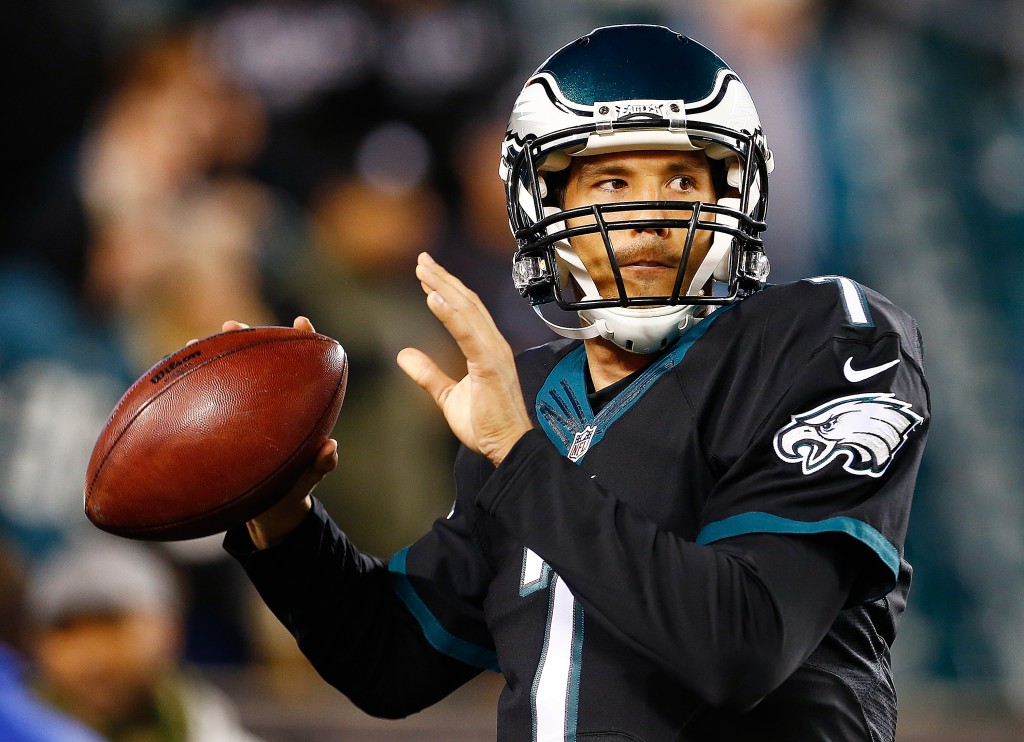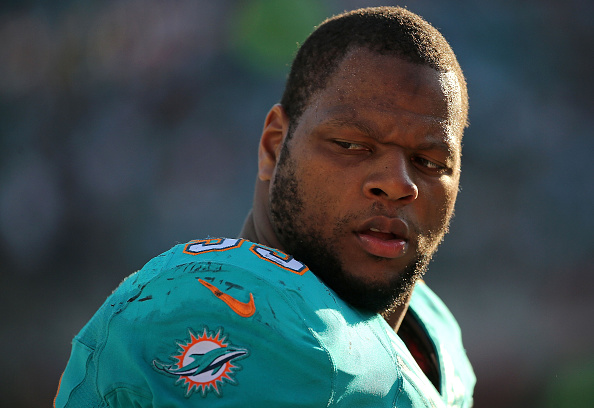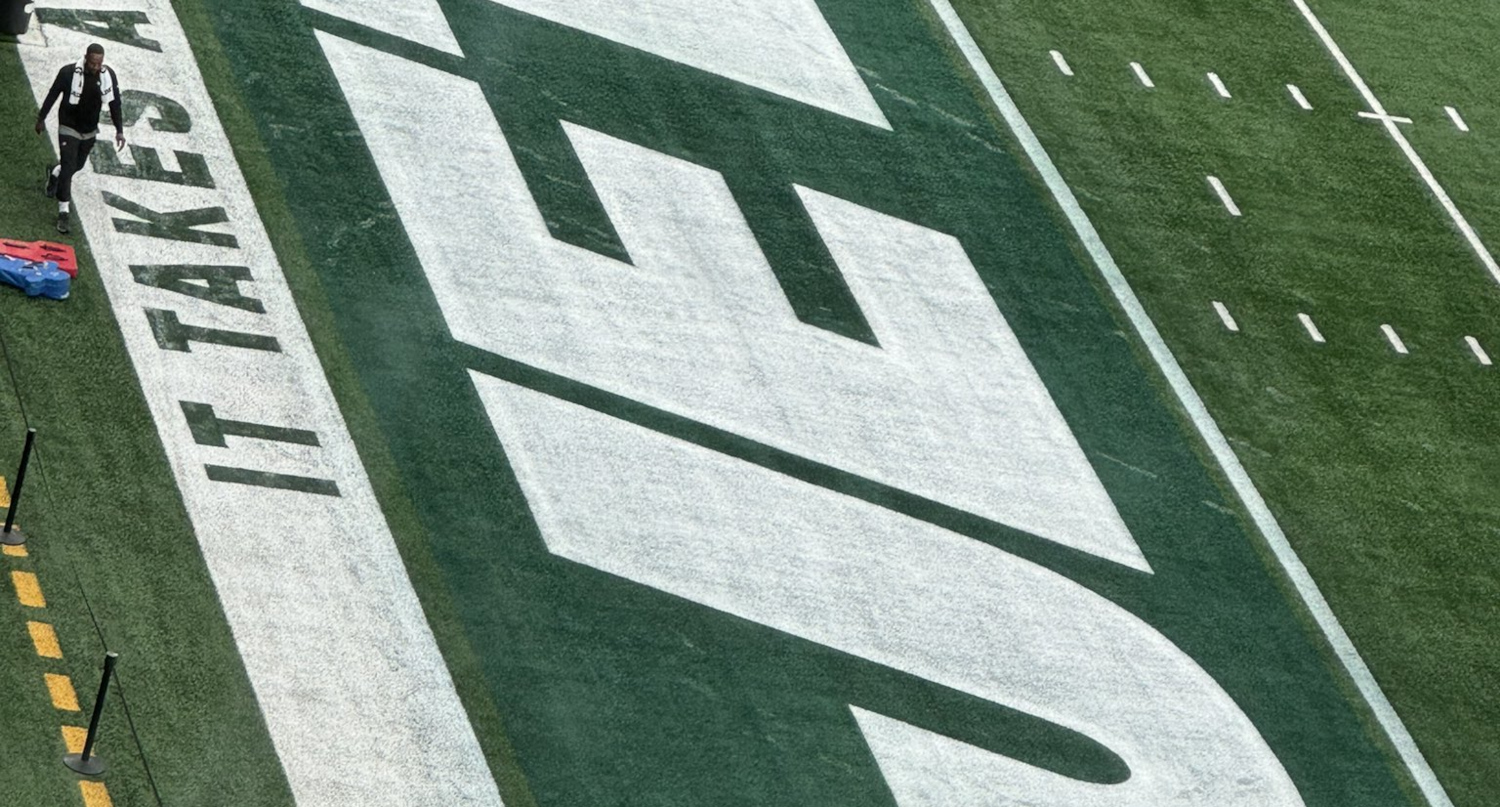Last week, we discussed the 10 best value contracts in the NFL and why value is so important when it comes to building a roster and managing the salary cap. Teams never want to overpay for underperformance—they’d much rather pay less and get more, on the field, than the other way around. But even with general managers around the league well aware of this, there are often missteps made that result in players being paid handsomely followed by their performance dropping off.
With that in mind, here are 10 contracts that are offering the worst value for their respective teams. There are many reasons for this—one of which is why there are a trio of quarterbacks on the list—a pitfall that teams struggle to regularly avoid. But they also are cautionary tales and learning opportunities. The silver lining in making mistakes is, after all, learning from them and not repeating them in the future. The problem? We’ll doubtlessly see NFL teams make these same errors in the future. Desperation is a driving factor in the league these days.

WR Torrey Smith, San Francisco 49ers
Torrey Smith is a big, fast receiver who is able to get behind defenses in order to make big, yard-eating plays—so certainly, there is room for his skill set in today’s NFL. The only problem is what the San Francisco 49ers chose to pay for those skills in 2015 when they signed the free agent to a five-year, $40 million with $22 million guaranteed.
In Smith’s first four years with the Baltimore Ravens, he totaled over 4,000 receiving yards and 34 touchdowns, but he also had a sub-50 percent catch rate, something that continued into his first year with the Niners, in which he caught 33 of 62 passes. And he’s a two-trick pony—he can get deep for contested passes and often draw defensive pass interference penalties. And for all that, he was signed to a top-10 total value contract for his position, a decision made by the Niners that reeks of overpayment.
This year, Smith will cost $7.6 million against San Francisco’s salary cap and will cost $9.6 million for the final three seasons of his contract. Now, the dead money to cut him in 2017 will only be the equivalent of his prorated signing bonus ($1.6 million per year, which means $4.8 million to cut him next year), and his 2017 salary is only guaranteed if he’s on the roster on April 1. So the Niners did build in financial protections to Smith’s deal that don’t put them on the hook for too much cash should he not pan out. But the 49ers will, at least, pay Smith $11.2 million over his first two seasons with the team, which is a pretty expensive payday for a very specific sort of receiver.
TE Coby Fleener, New Orleans Saints
Much like the Torrey Smith contract, the New Orleans Saints won’t be on the hook for the entirety of tight end Coby Fleener’s five-year, $36 million contract that he signed this past March. The deal is structured much the same, with the final three years consisting solely of dead-money charges equal to his prorated signing bonus (again, $1.6 million per year) beginning in 2018. But between now and then, things are a little shaky for both sides.
For Fleener, perhaps a fresh start will help inject his career with much-needed energy. A 2012 draft pick of the Indianapolis Colts and college teammate of quarterback Andrew Luck, Fleener was first pegged to play an integral role in the team’s passing offense. But Fleener never did better in a year than his 2014 performance, with 774 yards and eight scores and the Colts moved on in free agency.
The Saints had better hope that Fleener has a career resurgence in New Orleans. While his cap hit is a manageable $2.4 million for 2016, that number balloons to $7.5 million in 2017, while it would cost the team $12.2 million to cut him. For a team like the Saints that has been constantly strapped for cap space, locking Fleener into a deal that expensive, even if just for a year, could force them to make difficult decisions elsewhere on the roster in the upcoming offseason.
Contracts, though, aren’t paid out based on past performance but expectations of future success. Perhaps the Saints know something we currently don’t about Fleener’s fit on the offense and this turns out to be a smart pickup for reasonable money in a year’s time. But for now, it’s a lot to pay for a tight end who has been only marginally successful in his first four seasons.
QB Sam Bradford, Philadelphia Eagles
There’s actually little inherently wrong with the contract the Philadelphia Eagles inked with quarterback Sam Bradford back in March. The deal, worth a maximum of $35 million, spans only two years and has a cap hit of $12.5 million this year that balloons to $22.5 million in 2017, but has just $5.5 million in dead money in a year’s time. The $22 million guaranteed is also not a bad number considering not just the length of the deal, but also the position it concerns. But there are still problems with this contract—mainly, what it means for Bradford’s career going forward.
Not long after Bradford had signed his deal, the Eagles signed Chase Daniel to a three-year, $21 million backup contract. Then they traded a significant haul of draft picks to the Los Angeles Rams to move up to the No. 2 spot in the 2016 draft to select quarterback Carson Wentz. Upon completion of those two moves, Bradford had to see the writing on the wall: While he may begin the 2016 season as the Eagles’ starter, there would be no guarantees that he’d finish it that way, and even fewer that he’d have the job in the final year of his contract.
This contract is a poor value not because of the money involved—no, the Eagles were incredibly savvy when putting this deal together, especially given Bradford’s lengthy injury history and inconsistent play—but rather because of what it does to Bradford’s value. He signed a doomed deal. Now it looks ever more likely that Bradford will spend his 2017 with the third team of his career.
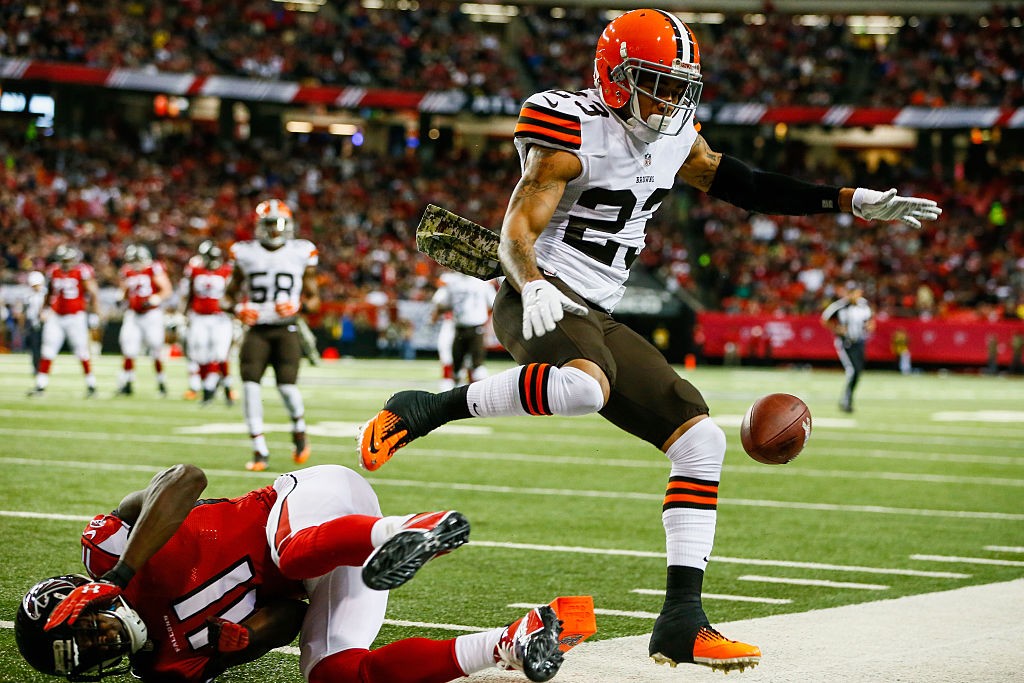
CB Joe Haden, Cleveland Browns
Cleveland Browns cornerback Joe Haden has been one of the top players at his position numerous times over the past six seasons, reaching the Pro Bowl twice and being part of what was one of the NFL’s very best secondaries in 2014. (No joke!) But even that cannot prevent Haden’s contract from being one of the worst values in the league, at least as things stand now.
Haden missed 11 games last season with rib and ankle injuries and a concussion that landed him on injured reserve. The litany of injuries and time off led to him totaling just 22 combined tackles and two passes defensed in his five games played. But it’s not just the injury history that is of concern here—it’s that concussion and the subsequent injured reserve designation that is the issue.
Haden suffered the concussion on Nov. 1, but was not placed on injured reserve until mid-December, with the season nearly over. That triggered a clause in his contract that made the entirety of his 2017 base salary—$10.1 million—fully guaranteed. Otherwise, the salary wouldn’t have guaranteed until Feb. 10. These two dates are key, because in between Haden being placed on IR and that Feb. 10 trigger date, something important happened: The Browns again overhauled the coaching and front office staffs.
By placing Haden on IR when they did, the Browns’ former regime forced the incoming group’s hand when it came to the cornerback’s status for 2016. Whether they wanted him to stay on the roster or not, they had no choice. With bonuses included, Haden is set to make $13.4 million this year, but it would cost $19.7 million to cut him. At the same time, Haden is still recovering from offseason ankle surgery and may not be able to participate at all in training camp or the preseason this summer. Will Haden’s big cap hit be worth it? Even if it’s not, the injury-only guarantee that Cleveland’s former front office decided to trigger on their way out the door puts the Browns on the hook for a lot of cash that could have been unnecessary.

RB LeSean McCoy, Buffalo Bills
In four of his seven seasons in the NFL, current Buffalo Bills running back LeSean McCoy has surpassed 1,000 rushing yards. He has also been a consistent contributor in the passing offense, with 2,574 receiving yards to his name. When healthy and motivated, there’s little doubt that McCoy is one of the most explosive offensive players in the league. And yet, this still doesn’t entirely justify the five-year, $40 million contract extension that he received from the Bills when he was traded to them a year ago after six years with the Philadelphia Eagles.
McCoy’s total contract value is the second-highest in the league at his position, behind only Adrian Peterson. He has $26.5 million in guaranteed money—or 45.6 percent of his total contract value—and a cap hit of $7.675 million for 2016. Meanwhile, his performance in his first season with the Bills was not in line with the contract he received, with 203 carries for 895 yards and three scores and another 32 receptions for 292 yards and two scores, in 12 games played.
Paying a high price for a running back, especially one creeping towards 30 years old and with a not-insignificant injury background, is always a gamble in today’s NFL. But it’s not just the total money that’s an issue. It may not be until 2019 that the Bills are financially comfortable enough to cut him, given that his dead money charges will be over $7.8 million next year and $5.25 million in 2018. The Bills would have been better off being more conservative with their offer to McCoy and, if he said no, should have allowed him to pursue other suitors willing to pay him that much.
QB Jay Cutler, Chicago Bears
The panic over not having a good or even serviceable starting quarterback in the NFL can drive teams to do desperate things. This is why the Chicago Bears gave Jay Cutler a seven-year contract extension in 2014 with a maximum value of $126.7 million. Though Cutler is one of the most erratic performers at his position, he can be a game-changer when he’s good, and it was that Cutler the Bears had in mind when giving him a high-end per-year average of $18.1 million.
Considering that the alternative was unthinkable, the Bears had little choice but to lock Cutler down for the time being. And luckily, the most painful parts of Cutler’s contract, from a financial perspective, are about to come to an end. Though his deal runs through the 2020 season, his guarantees run out after this year. Cutler has a $17 million cap hit with $19 million in dead money had the Bears for some reason cut him this offseason. But his cap hit next year is $16 million, with the dead money just $2 million—or the rest of his prorated restructure bonus included in his contract when he signed in 2014.
So while, on paper, seven years and nearly $127 million seems like a ridiculous contract for the Bears to offer Cutler, they weren’t completely blinded by quarterback lust. Further, if the Bears do keep Cutler for another two years after all, his $16 million and $17 million cap hits will be appropriate to his level of talent, given the way the quarterback market has been evolving. What was a problematic deal upon signing has now proven to be, at most, a brief nuisance.
DT Ndamukong Suh, Miami Dolphins
Ndamukong Suh spent the first five years of his career with the Detroit Lions establishing himself as the premier defensive tackle in the league. And when he left in free agency in 2015, there was no doubt he was on track to receive a record-breaking payday from his eventual new team. And indeed, that came to pass, with the Miami Dolphins signing him to a six-year, $114.375 million contract with just under $60 million in guaranteed money.
It’s not that Suh should have passed up that money—he’s certainly earned it, with 36 sacks and numerous quarterback pressures in his time with the Lions alone—and the Dolphins certainly had it to spend. It’s just that the Dolphins now need to be wary that they weren’t paying Suh a reward for the previous five years, but rather a payday that prognosticates him continuing to play at a high level for years to come.
Suh had a good debut season in Miami, with six sacks and 60 combined tackles, ranking him sixth among interior defenders, according to Pro Football Focus. Still, that’s not the No. 1 spot which Suh had occupied for years. Chalk it up to adapting to a new team and system ,and Suh could rebound (or what is for him a rebound) in 2016, making all this money thrown his way worth it. Or, he could slow with every year—he’s 29 years old already—forcing the Dolphins into overpaying him because the dead money to release him will be prohibitively expensive until 2019 at the earliest.
This year, Suh has a total cap hit of $12.6 million, but it jumps to $19.1 million next year and then $26.1 million the in 2018—when at the same time, it would cost Miami $22.2 million to release him. In 2019, when Suh will be 32 years old, he could cost the Dolphins $28.1 million in cap space—or $13.1 in dead money. That’s a whole lot of cash the Dolphins have to hope they don’t regret committing to one player. Otherwise, it’s an expensive lesson they will soon learn.
New coach, new DeMarco.
DeMarco Murray goes 54 yards UNTOUCHED to the end zone. #PHIvsNYG https://t.co/Pk9VN46pCj
— NFL (@NFL) January 3, 2016
RB DeMarco Murray, Tennessee Titans
The true test of whether DeMarco Murray’s restructured deal with the Tennessee Titans will come when the regular season starts. Murray, traded from the Philadelphia Eagles to the Titans in March, signed a four-year deal worth $25 million with $12.5 million guaranteed, a much better contract than the initial four-year, $40 million contract he signed a year prior with the Eagles. But it’s still a curious expenditure for the Titans, especially with the team selecting Alabama running back Derrick Henry in the second round of the 2016 NFL Draft.
Murray made a name for himself in four seasons with the Dallas Cowboys, particularly in 2014, when he rushed 392 times for 1,845 yards and 13 scores. That season brought his asking price way up, too high for the Cowboys to retain him and thus he landed in Philadelphia. His 2015 was not what he had expected, with just 193 carries on the year, for 702 yards and six scores and another 322 yards and one touchdown in the passing game. He was displeased with how he was being used and demanded a trade even after then-head coach Chip Kelly was relieved of his duties. And now he’s in Tennessee, looking for a fresh start.
The problem with the deal is its first two years. This year, Murray has a total cap hit of $6 million and in 2017, it rises to $6.25 million. Those two seasons exhaust his guarantees, which means the Titans can cut him as early as 2018 (when again, he has a $6.25 million cap hit) with zero dead cash counting against them. But should Henry emerge as the better starting option and if the likes of Bishop Sankey or Dexter McCluster also take touches away from Murray, those are expensive salaries to pay for a backup in 2016 and 2017. Now, if the 2014 Murray returns triumphantly, there is nothing wrong with what the Titans have chosen to pay him, but the presence of Henry alone is enough to put that possibility in question.
4 words for you: Joe. Flacco. Naked. Bootleg.
TOUCHDOWN –> #FlaccoSPIKE! #CLEvsBAL http://t.co/0BRgi0m1Tt— NFL (@NFL) October 11, 2015
QB Joe Flacco, Baltimore Ravens
Three months ago, Baltimore Ravens quarterback Joe Flacco’s contract would certainly, without a doubt, be considered one of the more head-scratching deals done in recent memory, especially when taken at face value. Flacco essentially was able to call his own shot in March 2013, coming off an 11-touchdown, zero-interception postseason performance that led the Ravens to a Super Bowl victory conveniently right before he was set to be a free agent. The reward was a six-year, $120.6 million deal that blew everyone’s minds.
Of course, as the details emerged, the reasons for panic diminished. There was only $29 million in guaranteed money, consisting of his signing bonus and his 2013 salary. And though the cap hits as the contract played out got higher and higher, almost to a comedic degree, it was also obvious that those $28 million and $31 million cap charges were there only to be restructured in a later extension.
That came to pass this March, when Flacco redid his deal and signed a three-year, $66.4 million extension which takes him from what would have been a $28 million cap hit for this season to a $22.55 million hit.
There are still some concerns associated with Flacco’s contract. He’s appeared to have reached a plateau in his development, where 3,800 yards, 19 touchdowns, 12 interceptions and a completion percentage of just around 60 percent is an approximate average of his production over his career. He’s coming off of a torn ACL, the first significant injury of his professional life and marking the first time he’s ever missed games with Baltimore. And the Ravens’ salary cap situation could remain tight, to the point where Flacco costing $19 million or $20 million against the cap, instead of $24 million and up, would provide significant financial relief. Though the Ravens have bought stability at the quarterback position, it has been done at the cost of creating value.
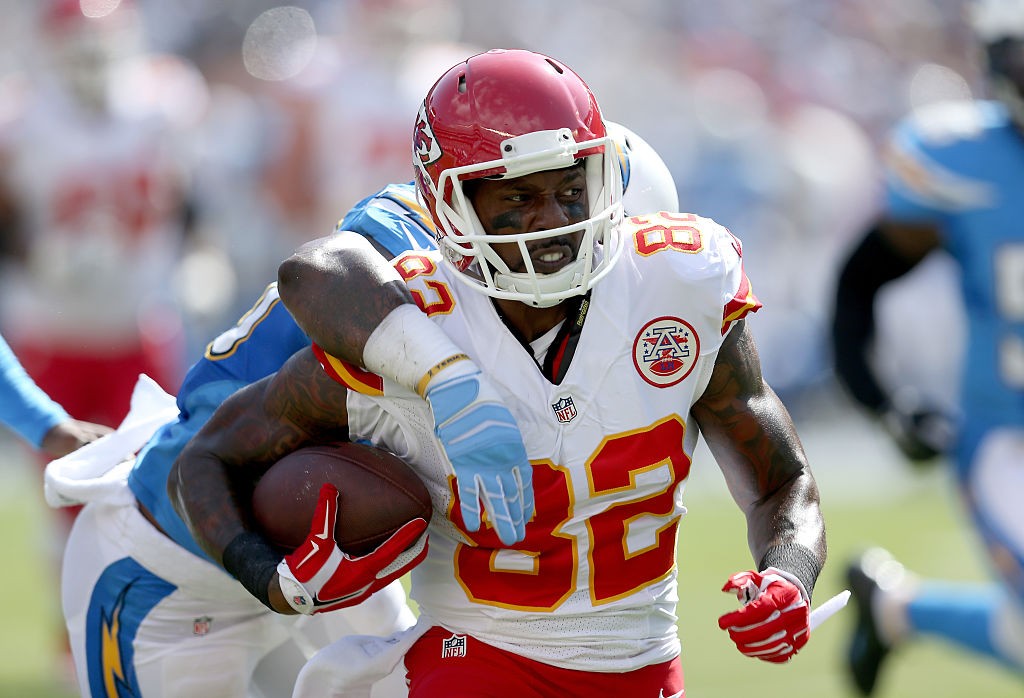
WR Dwayne Bowe, FA
While receiver Dwayne Bowe is currently a free agent and awaiting his chance to sign a contract with his third NFL team, he’s worth noting on this list because his previous deal with the Cleveland Browns should serve as a cautionary tale. The two-year, $12.5 million contract with $9 million guaranteed he signed in 2015 might be one of the worst-value deals made in the league in quite some time.
Bowe, 30 years old, drew the attention of then-Browns general manager Ray Farmer, who had worked with Bowe in their concurrent times with the Kansas City Chiefs. Farmer (wrongly, it turns out) believed that Bowe could return to his 2010 form if given the chance with the Browns, and clearly thought highly enough of Bowe as a person and player to give him such a lucrative, if brief, contract.
It didn’t work out. Bowe missed most of training camp and the preseason with a hamstring injury and then couldn’t crack the top-four wideouts on the depth chart, according to former head coach Mike Pettine. He appeared in seven games and was inactive in another nine—and not due to injury. On the year, he played just 81 snaps and caught a mere five passes on 13 targets for 53 yards, all while making $4.5 million on the season.
Unsurprisingly, Bowe was released during the offseason, but it’s still costing the Browns. Remember that $9 million in guaranteed money? Bowe has received only half of it, which means the other $4.5 million counts against their salary cap room as dead money. From start to finish, the one year Bowe spent in Cleveland served as a master class in how not to structure a contract.


